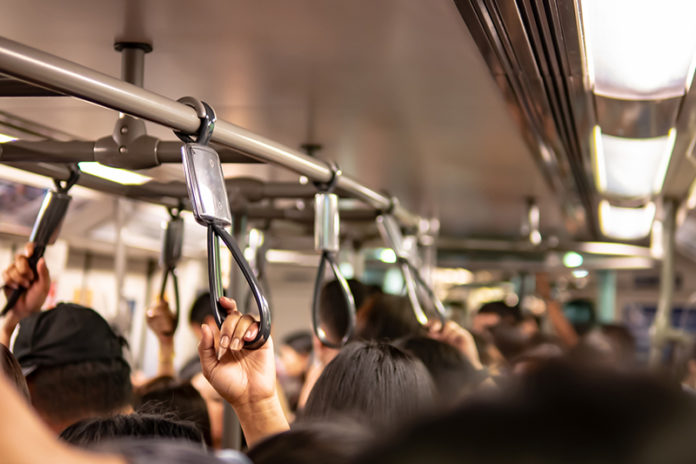More than two years after COVID-19 sent the country into a shutdown, life is looking close to the old normal. The job market is hot, restaurants have rebounded, sports and concert venues are packed and travel is up. But mass transit? It’s still running slow, with no speedup in sight.
The pandemic ravaged urban transportation systems in two immediate ways. First, it forced, or allowed, many employees to work remotely rather than commute downtown.
Second, it instilled fear of being crowded shoulder-to-shoulder with people who might be shedding the virus. Nationally, mass transit ridership plunged to one-fifth of its previous level.
Much has changed since then. But even now, public transportation systems are carrying only 54% of the passenger loads they did before the pandemic. Fear of infection may no longer be deterring many riders, but the work-from-home shift has proved durable.
New York City is feeling some painful effects. Before the coronavirus struck, Manhattan had a daytime workforce of 2.6 million, 70% of whom commuted. But The Wall Street Journal reported, “Midtown offices barely cracked one-third of their pre-pandemic workforces in the first two weeks of March, despite falling COVID-19 infection rates.”
Even when workers return to their old offices, many won’t show up more than a couple of days a week. The old commuting patterns are not going to reemerge soon, if ever.
Compounding this change is that many onetime commuters are not merely working from home; they’re working from homes far removed from their previous locale. With rents and housing prices skyrocketing in big cities, a lot of Americans have relocated to distant suburbs or small rural towns, and they are putting down roots.
Between July 2020 and July 2021, the Census Bureau reports, New York, Chicago, Los Angeles and San Francisco lost 700,000 residents — more than the population of Washington, D.C. For the most part, those migrants now live in places where mass transit is less comprehensive and accessible.
If those factors weren’t powerful enough, the pandemic produced another one: rising crime. Emptier subway cars and buses emboldened criminals — and the fear of assault and robbery discouraged people from using mass transit.
“In Philadelphia,” The New York Times reported, “the number of certain serious crimes reported on public transit is higher than before the pandemic, and in New York about equal to previous levels, even though ridership in both places is significantly lower. In other cities, there are fewer crimes being reported than in 2019, but the crime rate is up because there are so few passengers.” That trend makes mass transit scarier and driving more attractive.
The outlook for public transportation may not be entirely bleak, but for the time being, it is exceptionally murky. Yet the Biden administration has taken this moment to pour vast new sums of money into the system, heedless of the risks.
In the Chicago area, notes Crain’s Chicago Business, some of the federal windfall will be spent on “extending CTA lines and other public rail systems to accommodate the migration of jobs from the city to the suburbs.” Los Angeles has embarked on a huge rail construction project. Transportation planners want to build a second rail tunnel connecting San Francisco and Oakland — at a cost of $29 billion, when the Bay Area is losing population.
This is no time to sink money into old systems that may be doomed to growing irrelevance.
Commuter rail has seen an even bigger decline in patronage than other modes. The great drawback of rail networks is that they are fixed in place, unable to shift quickly with changes in travel patterns.
Right now, it makes much more sense to put money into buses, which can alter their routes overnight. They are also used more by low-income people who have no good alternatives to public transportation.
It also makes sense to invest in maintaining existing systems. Many people still depend on the same mass transit options they relied on before. It’s hard to imagine New York without its subway system or Chicago without the L. Their value is incalculable.
But for the time being, the future of work, commuting and personal mobility is clouded with uncertainty, which calls for caution and humility on the part of lawmakers and urban planners. Investments in public transportation should serve the needs of the future, not the habits of the past.































